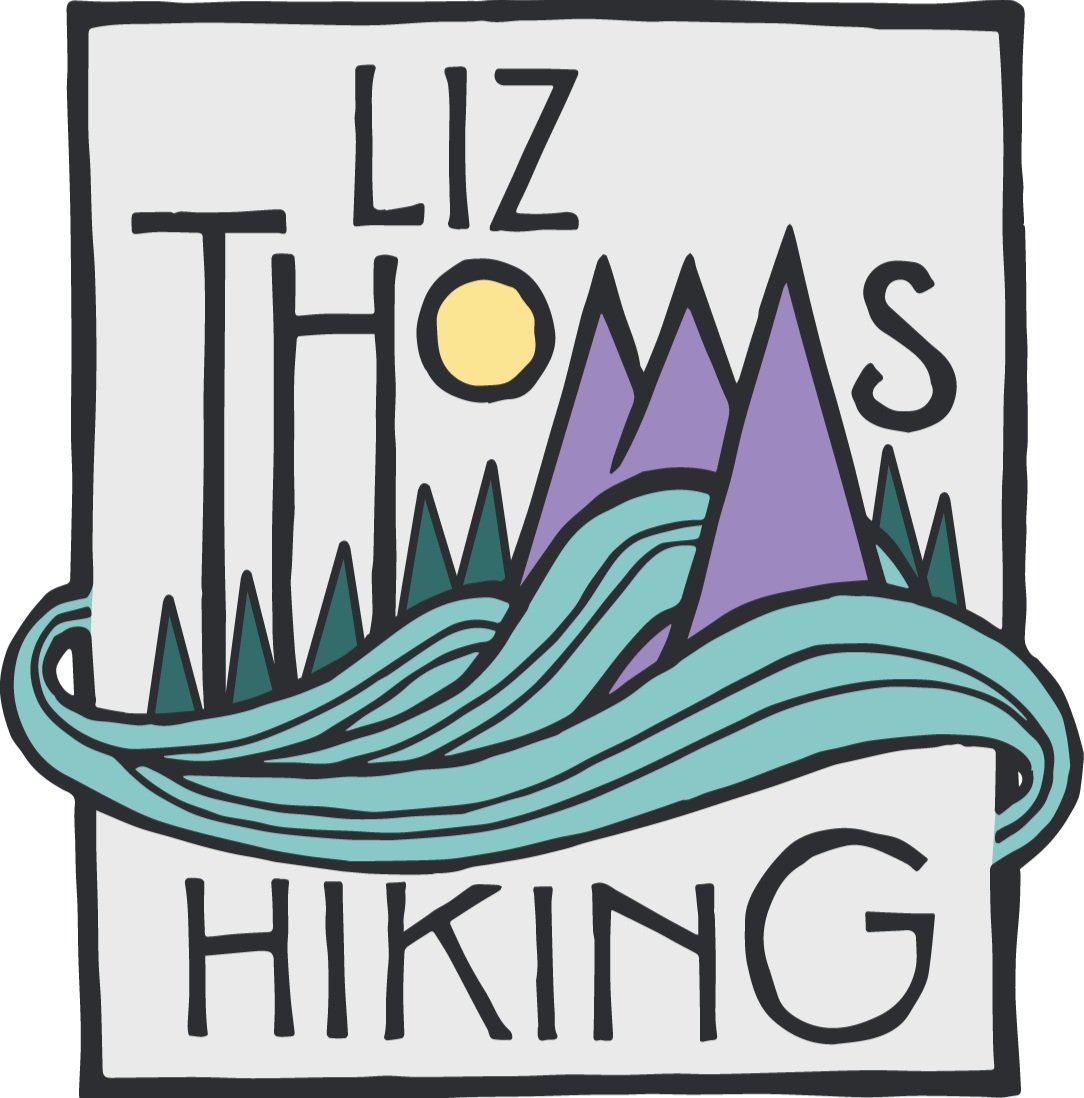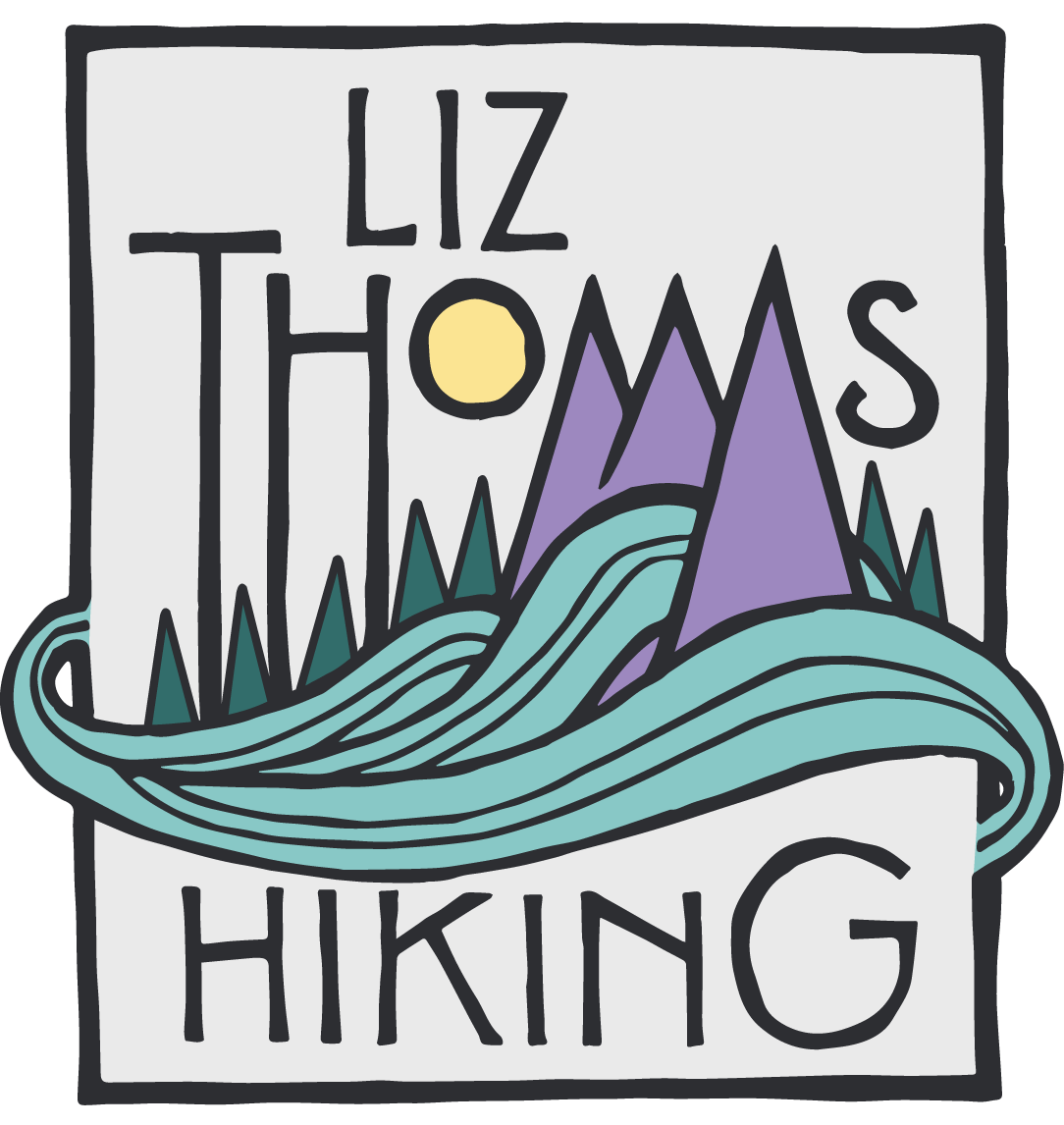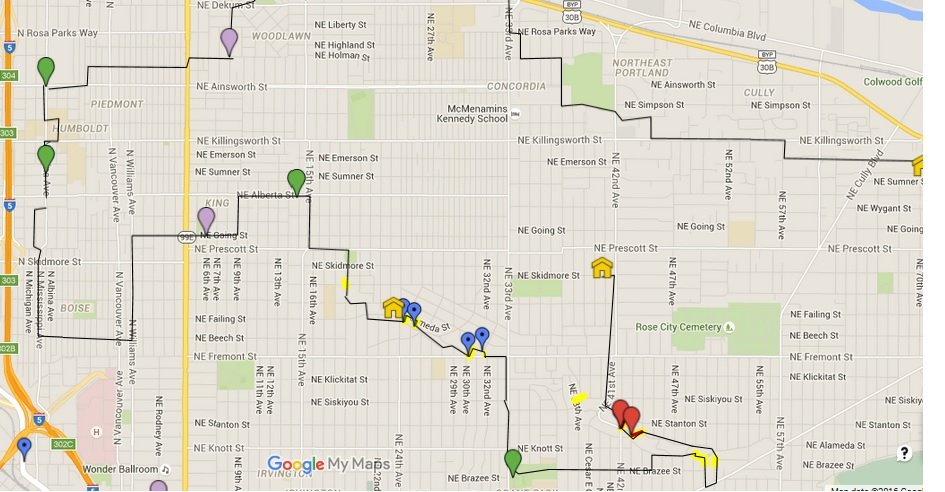Portland Urban Hike: Cully and Northwest
Northeast Portland has been the poster child for gentrification in a city that has been the poster child for gentrification nationwide. Today I hiked past the biggest examples of Portlandia today—the tiny house hotel, wooden high rises next to graffiti covered fences, and even the mural artist whose work is getting torn down with the building its on. It was a day of old and new Portland, as seen through the eyes of someone who doesn’t live here and as seen on foot.
The day started in Cully, a neighborhood which 20 years ago was considered dicey but now has blocks filled with Little Free Libraries (which I’ve been problematically obsessed with on this hike). It’s also become a neighborhood full of hikers—almost as soon as I left Miss Info’s home, I was as Toaster and Goodfoot’s house. What a small world!
Tomato met us at 42nd and Killingsworth and we headed through a beautiful park (and former school) towards 33rrd and Columbia—an area replete with a nasty series of curvey overpasses and underpasses with very small shoulders and fast moving cars. By car, these area looks impossible for an urban hiker, but there was a stairway to catch down from 33rd to Columbia Tomato, who lives in Portland as a car-free individual and walks in the city more than anyone I know, has experienced pedestrianism over 33rd and Columbia Lombard many times, but didn’t seem nearly as sketched as I was. I had looked at the area on Google Streetview and knew that a beautiful spiral stair existed in the area. Although no one was living under the overpass, we found a needle.
Walking Lombard was not fun. Tractor trailers splashed us as they zoomed onward. It was loud. Tomato told me a better route would have been to head north thorough the Columbia Slough area on nice trail and then meet up with 11th and Columbia (I had considered this route, but thought it would add at least 3 miles).
Finally, we made it to 11th and Lombard—just in time to see the train loaded with oil tankers coming by. Oil trains have become a political issue in the northwest because some locals are concerned about environmental or safety hazards of large quantities of oil moving so close to city center and neighborhoods. Train traffic is up 4 times, a big oil-by-rail terminal is in the works across the Columbia River in Washington, and as urban hikers, we walked through the heart of the controversy. Shortly after passing the train, we walked through a residential neighborhood with a No Oil Trains sign on the front lawn. This is what I love about urban hiking—understanding the local issues with national implications at a neighborhood-geographic level.
From there, we walked past several intersection murals to the incredible Penninula Park Rose Garden. Even this early in spring when the roses were not out yet, it was a stunning area. I went there to see a fountain (which I expected would be turned off) and was expecting a small, roadside few rows of roses—if I skipped it, that would have been all right. I did not expect a giant garden with a huge fountain that was running and a really cool looking pagoda. I can’t wait to return to the area when the flowers are in bloom!
Gentrification was just around the corner. We walked Albina, which my Portlandness book explained was the heart of redlining in Portland—at least until World War II when there was a huge influx of shipyard workers. Many African Americans at the time moved to Vanport, a shipyard workers city, until sudden 15 foot rise of the Columbia River flooded them out of home. Albina/Mississippi has become the example of gentrification in Portland. While I’d eaten hipster brunch here many times before, walking it forced me to read about its history and to see the history on its fences. Even the beautiful Rose Garden I had enjoyed so much a few blocks before had displaced African American families.
We grabbed tacos at Porque No? a famous Portland taco place that had a line out the door in the rain—even at 2 pm on a Monday. Virgo’s girlfriend Jamie and my friend Carrie joined us. After a leisurely lunch, we walked up Williams—another example of gentrification in the city. We got ice cream at What the Scoop?, famous for their fortune cookie waffle batter ice cream cones.
Lastly, we walked to Alberta, another neighborhood that has gone through a lot of change. There, we passed the tiny home hotel, the grilled cheese sandwich truck where you eat your meal in an old school bus, and a bunch of cute shops. A local mural artist chatted with us and told us that there were 271 different intersection murals in the city! Man, that is a lot less than the 20 or so I have mapped!
The day ended with Alameda Ridge—the old money swanky part of the northeast. We had fun in the Sabin Hydropark at the top of the hill and down through the many stairs of that beautiful neighborhood. Tomato walks the neighborhood a lot so he knew a bunch of the stairs, but it’s always super fun to walk with locals and discover something new.
Despite the weather, it was a fun and fascinating day in Portland and aside from the walk on Lombard, perhaps of all the days of the hike, the one I can see others replicating the most.








